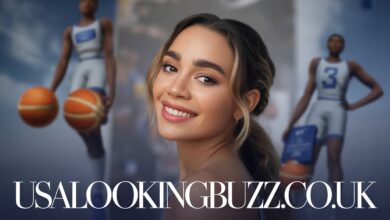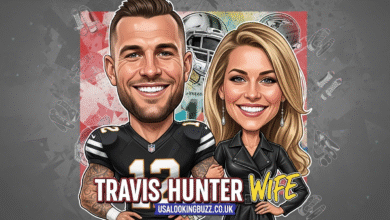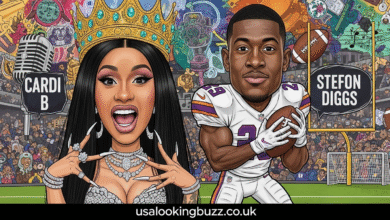Olivia Rodrigo Stanley Cup Obsession Shocks Fans Worldwide
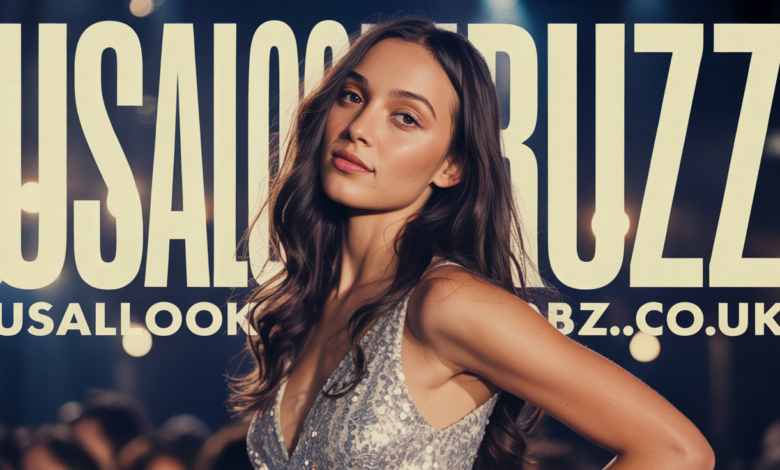
Introduction
When you think of Olivia Rodrigo, you probably picture her belting out heartbreak anthems or walking red carpets. But there’s another side to this pop sensation that has fans absolutely obsessed. The olivia rodrigo stanley connection has become one of the most talked about celebrity endorsements, even though it wasn’t technically an endorsement at all.
You’ve probably seen Stanley cups everywhere lately. Coffee shops, gyms, college campuses, and yes, even in the hands of your favorite celebrities. But when Olivia Rodrigo was spotted with her Stanley tumbler, something shifted. The internet went wild. Sales skyrocketed. And suddenly, owning a Stanley cup became more than just staying hydrated.
This article explores how the olivia rodrigo stanley phenomenon happened, why it matters, and what it says about celebrity influence in today’s world. We’ll dive into the backstory, the cultural impact, and everything you need to know about this unexpected viral moment. Whether you’re a Livie (that’s what Olivia’s fans call themselves) or just curious about internet trends, you’re in the right place.
Who Is Olivia Rodrigo?
Before we get into the olivia rodrigo stanley story, let’s talk about the star herself. Olivia Isabel Rodrigo burst onto the music scene in 2021 with her debut single “drivers license.” The song shattered streaming records and made her an overnight sensation.
Born on February 20, 2003, in California, Olivia started as an actress. You might remember her from Disney Channel’s “Bizaardvark” or the Disney+ series “High School Musical: The Musical: The Series.” But music is where she truly found her calling.
Her debut album “SOUR” became a cultural phenomenon. Songs like “good 4 u,” “deja vu,” and “traitor” dominated charts worldwide. She won three Grammy Awards, including Best New Artist. At just 19 years old, she had accomplished what many artists spend lifetimes chasing.
Olivia’s authenticity resonates with Gen Z listeners. She writes about heartbreak, anger, jealousy, and growing up with raw honesty. Her lyrics feel like reading someone’s diary. This genuine approach makes fans feel connected to her on a personal level.
Her second album “GUTS” continued her success trajectory. Released in 2023, it showcased her evolution as an artist. Songs like “vampire” and “get him back!” proved she wasn’t a one album wonder. Olivia Rodrigo is here to stay.
What Is a Stanley Cup (The Tumbler Kind)?
Let’s clear something up right away. We’re not talking about the hockey trophy. The Stanley we’re discussing is a reusable tumbler made by Stanley, a company that’s been around since 1913.
Stanley originally made products for outdoorsmen and workers. Their thermoses and bottles were built tough for harsh conditions. The brand was known for durability and keeping drinks hot or cold for hours. But for decades, Stanley products weren’t particularly fashionable.
That changed with the Stanley Quencher. This 40 ounce tumbler became the product that transformed the company. It features a handle, a straw, and impressive insulation. The design makes it perfect for all day hydration.
The Quencher keeps drinks cold for up to 11 hours and iced for up to 2 days. It fits in most car cup holders despite its large size. The straw makes sipping easy while working, driving, or exercising. These practical features contributed to its popularity.
But practicality alone doesn’t create viral phenomena. The Stanley cup became a status symbol, a collectible item, and a social media sensation. Limited edition colors sell out in minutes. People line up at stores before opening. The hype is real.
How the Olivia Rodrigo Stanley Connection Started
The olivia rodrigo stanley moment wasn’t a planned marketing campaign. Nobody paid Olivia to pose with the tumbler. This makes the story even more interesting because it happened organically.
Paparazzi photos and social media posts showed Olivia carrying her Stanley cup around Los Angeles. She had it at the gym, running errands, and heading to the studio. Like millions of other people, she just genuinely used the product.
Fans noticed immediately. Screenshots circulated on Twitter, Instagram, and TikTok. Comments sections filled with people asking about her tumbler. “Where did Olivia get that cup?” “What color Stanley is that?” “I need Olivia’s water bottle!”
The timing aligned perfectly with Stanley’s existing viral moment. The brand was already trending thanks to TikTok influencers and Instagram moms. But celebrity endorsement, even accidental, amplifies everything. Olivia’s massive young fanbase wanted what she had.
Social media algorithms did the rest. Posts about Olivia’s Stanley cup spread across platforms. Fan accounts dedicated content to tracking which color she used. The obsession grew beyond reasonable proportions, but that’s internet culture for you.
Stanley probably couldn’t have planned better marketing if they tried. Organic celebrity endorsements carry more weight than paid advertisements. When fans see their idol genuinely using a product, it feels authentic. And authenticity sells.
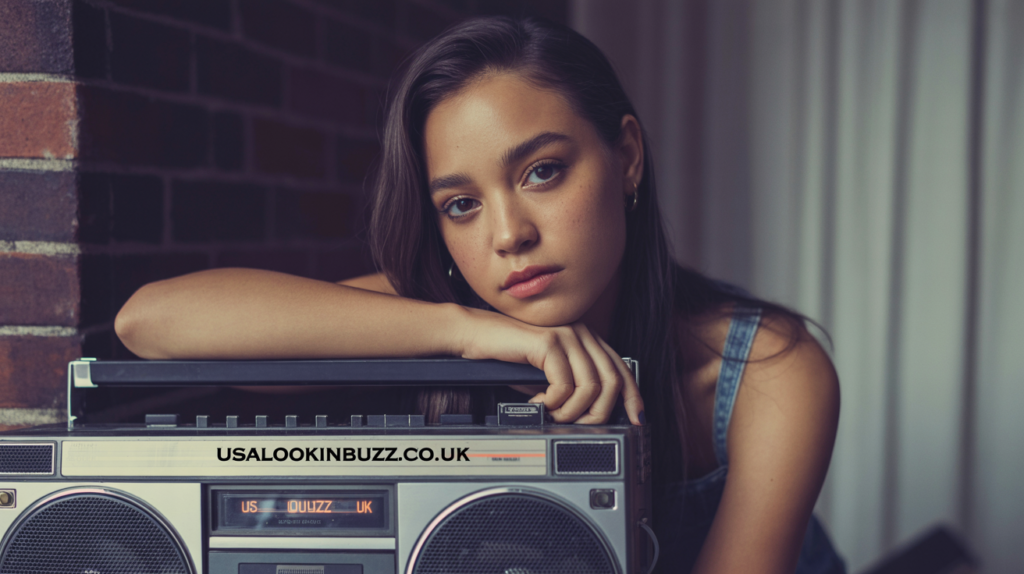
Why Fans Went Crazy Over Olivia’s Stanley
You might wonder why people care so much about a water bottle. The answer reveals fascinating insights into celebrity culture and consumer behavior. Let’s break down the psychology behind the olivia rodrigo stanley craze.
First, people want to emulate celebrities they admire. Olivia represents success, talent, and relatability. If she uses a Stanley cup, it must be good, right? This logic drives countless purchasing decisions. Fans feel closer to their idols by using the same products.
Second, the Stanley cup had already achieved cult status. Olivia’s usage validated what enthusiasts already believed. It gave them another reason to justify their collection. “Even Olivia Rodrigo has one!” became a rallying cry.
Third, Gen Z loves functional fashion. The Stanley cup serves a purpose while making a statement. You stay hydrated and look trendy simultaneously. For a generation conscious about sustainability and health, reusable tumblers check multiple boxes.
Fourth, FOMO (fear of missing out) is powerful. When something becomes trendy, people rush to participate. Nobody wants to feel left out. Seeing Olivia with her Stanley created urgency among fans who didn’t own one yet.
Finally, collecting different colors became a hobby. Stanley releases limited editions regularly. The hunt for rare colors adds excitement. Olivia’s endorsement intensified this collecting behavior, with fans trying to identify and purchase her exact shade.
The Stanley Cup Phenomenon Beyond Olivia
While the olivia rodrigo stanley connection boosted popularity, the Stanley craze existed before and beyond her. Understanding the broader phenomenon provides important context for why Olivia’s involvement mattered so much.
Stanley cups became huge on TikTok first. Influencers posted videos showing their collections, some owning 20 or more tumblers. These videos garnered millions of views. The algorithm pushed Stanley content to more users, creating a snowball effect.
The #StanleyCup hashtag exploded on social media. Not the hockey version, but the tumbler. Users shared their colors, decorated their cups with stickers, and demonstrated the insulation capabilities. User generated content provided endless free marketing.
Limited edition releases create artificial scarcity. When Stanley drops a new color exclusively at Target or on their website, it sells out fast. Some colors become so rare they resell for hundreds of dollars. This scarcity drives demand even higher.
The durability narrative resonates strongly. People share stories of Stanley cups surviving car accidents, drops from buildings, and other dramatic scenarios. These testimonials reinforce the quality perception. You’re not just buying a cup; you’re making a lifetime investment.
Environmental consciousness also plays a role. Reusable bottles reduce plastic waste. Gen Z and Millennials care deeply about sustainability. Owning a Stanley cup signals environmental awareness, even if some people own multiple colors.
Different Stanley Cup Colors and Collections
Part of the Stanley obsession involves collecting different colors. The company releases seasonal shades and limited editions that drive fans wild. Let’s explore the variety that makes Stanley cups so collectible.
Stanley offers permanent colors available year round. These include classics like Cream, Charcoal, Rose Quartz, and Shale. You can usually find these options on their website or at major retailers. They’re the safe choices if you want a Stanley without hunting.
Seasonal collections align with holidays and times of year. Valentine’s Day brings pinks and reds. Fall introduces warm amber and burgundy tones. Winter features icy blues and metallics. These limited runs create urgency because once they’re gone, they’re gone.
Retailer exclusives add another layer. Target frequently gets exclusive Stanley colors available only in their stores. Starbucks has partnered with Stanley for special editions. These collaborations attract customers to specific retailers, benefiting both brands.
The secondary market for rare Stanleys is surprisingly robust. Sold out colors appear on eBay, Poshmark, and Facebook Marketplace. Some rare editions sell for triple or quadruple the original price. Collectors treat certain colors like investment pieces.
People customize their Stanleys too. Etsy shops sell custom stickers, wraps, and accessories. Monogramming services personalize tumblers. Boot accessories protect the bottom from dents. The customization options let owners make their Stanley unique.
Olivia Rodrigo’s Influence on Gen Z Consumer Behavior
The olivia rodrigo stanley situation exemplifies how celebrity influence works in 2024 and 2025. Traditional advertising matters less than authentic celebrity usage. Let’s examine Olivia’s particular impact on young consumers.
Gen Z trusts celebrities who seem genuine. Olivia’s rise to fame felt organic, not manufactured. She started on Disney Channel and worked her way up. Fans watched her journey, creating investment in her success. This background makes her endorsements, intentional or not, more powerful.
Social media allows direct celebrity access. Olivia shares glimpses of her daily life through Instagram stories and posts. When fans see her Stanley cup in these contexts, it feels intimate. Like getting recommendations from a friend rather than an advertisement.
Olivia’s aesthetic influences fashion and lifestyle choices. Her style blends vintage inspiration with modern trends. She makes grunge feminine and accessible. When she carries a Stanley cup, it becomes part of that curated aesthetic. Fans want to recreate the whole vibe.
The parasocial relationships fans develop intensify product influence. Parasocial relationships are one sided connections where fans feel they know celebrities personally. These feelings drive purchasing decisions because fans want similarities with people they admire.
Olivia’s demographic alignment with Stanley’s target market created perfect synergy. Young women aged 16 to 30 love both Olivia and Stanley cups. When these interests intersect, the impact multiplies. Marketing executives dream of this kind of organic alignment.
The Business Impact of Celebrity Product Sightings
The olivia rodrigo stanley moment had real business implications. When celebrities use products publicly, companies benefit enormously. Let’s look at the tangible impacts of organic celebrity endorsements.
Stanley’s sales increased dramatically during the peak viral period. While the company doesn’t release exact figures, reports indicate substantial growth. The 40 ounce Quencher became one of America’s best selling water bottles. Celebrity sightings contributed significantly.
Website traffic spikes follow celebrity product associations. After Olivia was photographed with her Stanley, searches for “Olivia Rodrigo Stanley cup” and related terms surged. This drove traffic to Stanley’s website and retailer pages. More traffic equals more sales opportunities.
Social media engagement provides measurable value. Posts mentioning both Olivia and Stanley received higher engagement than typical product posts. Comments, shares, and saves all increased. This engagement signals to algorithms that the content resonates, pushing it to more users.
Retail partnerships benefit from celebrity associations. When Target stocks exclusive Stanley colors and celebrities like Olivia use the brand, foot traffic increases. Retailers know celebrity endorsed products fly off shelves. This strengthens Stanley’s negotiating position with retailers.
Long term brand elevation matters most. Stanley transformed from an outdoor utility brand to a lifestyle status symbol. Celebrity usage accelerated this transformation. The company now commands premium pricing and enjoys customer loyalty that extends beyond practicality.
Similar Celebrity Product Moments in Recent History
The olivia rodrigo stanley phenomenon isn’t unique. Celebrity product associations have created viral moments throughout recent history. Understanding these patterns reveals how modern marketing and celebrity culture intersect.
The “White Lotus” effect boosted various products. When the HBO show featured characters using specific items, sales spiked. From designer bags to hotel properties, the show’s influence was measurable. This demonstrates how entertainment content drives consumer behavior.
Harry Styles wearing a cardigan during a performance created instant demand. The JW Anderson patchwork cardigan became impossible to find. Pattern tutorials went viral as crafters recreated it. One celebrity appearance launched countless purchases and DIY projects.
Emma Chamberlain’s coffee company benefited from her personal brand. As a YouTuber turned entrepreneur, Emma leveraged her influence into business success. Chamberlain Coffee reflects her aesthetic and values. Fans buy it because they connect with Emma personally.
Hailey Bieber’s Rhode skincare line succeeded partly due to her influence. She built anticipation through social media before launching. Her “clean girl aesthetic” aligned perfectly with the products. Celebrity founded brands increasingly dominate beauty and wellness markets.
The “Stanley cup effect” isn’t isolated. Various tumbler brands benefit when celebrities use them. Hydro Flask, Yeti, and Owala all experience similar patterns. But Stanley’s combination of features, colors, and timing created unprecedented success.
Social Media’s Role in Amplifying the Trend
Social media transformed how trends spread and intensify. The olivia rodrigo stanley craze demonstrates the power of platforms like TikTok, Instagram, and Twitter. Let’s examine how social media amplified this particular phenomenon.
TikTok’s algorithm favors trending content. When multiple users post about the same topic, the algorithm recognizes a trend. It then pushes related content to more users. This creates exponential growth in visibility. The olivia rodrigo stanley topic benefited from this algorithmic boost.
Instagram’s visual nature perfectly showcases products like Stanley cups. Users share aesthetically pleasing photos of their tumblers in various settings. When Olivia appeared in paparazzi photos or her own posts with her Stanley, these images circulated widely. Visual content drives desire.
Twitter conversations around celebrity sightings happen in real time. Fans tweet screenshots, reactions, and commentary immediately. Hashtags organize these conversations, making them easy to follow. The community aspect reinforces interest and validates the trend.
User generated content provides endless marketing material. Fans create posts, videos, and memes without any company prompting. This organic content feels more authentic than traditional advertising. When fans post about wanting Olivia’s Stanley cup, it influences their followers.
Influencers jumped on the trend for engagement. Content creators made videos about “Olivia Rodrigo’s favorite water bottle” or “Get Olivia’s look.” These videos attracted views from both Olivia fans and Stanley enthusiasts. Cross pollination expanded both audiences.
Sustainability and the Reusable Cup Movement
The olivia rodrigo stanley trend intersects with larger conversations about sustainability and environmental responsibility. Reusable cups represent more than just trendy accessories. They’re part of a cultural shift toward eco conscious consumption.
Single use plastic bottles create massive environmental problems. Americans use 50 billion plastic water bottles annually. Most aren’t recycled properly. They end up in landfills and oceans, taking hundreds of years to decompose. This environmental crisis motivates many to seek alternatives.
Reusable bottles significantly reduce plastic waste. One Stanley cup can eliminate thousands of disposable bottles over its lifetime. When you calculate the environmental impact, the choice becomes clear. Young consumers especially value this benefit.
Gen Z prioritizes sustainability in purchasing decisions. Studies show this generation considers environmental impact more than previous ones. They’re willing to pay more for sustainable products. The Stanley cup’s durability and reusability align with these values.
Celebrity influence can promote positive behaviors. When someone like Olivia Rodrigo uses a reusable bottle, it normalizes the behavior. Fans see that being environmentally conscious is cool, not preachy. This subtle influence potentially shifts behaviors more effectively than lecturing.
However, overconsumption undermines sustainability goals. Owning 20 Stanley cups in different colors contradicts the environmental message. The collecting aspect creates waste even while using reusable bottles. This tension reveals the complexity of modern consumer culture.
Criticism and Controversies Around the Stanley Craze
Not everyone celebrates the Stanley cup phenomenon. Critics point out various issues with the trend, including some valid concerns. Understanding different perspectives provides a balanced view of the olivia rodrigo stanley situation.
The price point excludes many people. Stanley Quenchers cost around $45, which is expensive for a water bottle. Not everyone can afford to participate in the trend. This creates a class dimension where the cup becomes a status symbol dividing haves and have nots.
Overconsumption contradicts environmental claims. People buying multiple Stanley cups in various colors undermine the sustainability message. If you own ten tumblers, are you really helping the environment? Critics argue the trend became more about collecting than conservation.
The resale market creates artificial scarcity and inflated prices. Resellers buy limited editions in bulk, then sell them at markup. This practice frustrates genuine customers who can’t access products at retail prices. Some view this as predatory behavior exploiting FOMO.
Viral trends can encourage mindless consumption. Not everyone who bought a Stanley genuinely needed one. Many people purchased them simply because they were trendy. This impulsive buying based on social pressure concerns critics of consumer culture.
The intense obsession seems disproportionate to the product. Camping overnight for a water bottle or paying $200 on the secondary market strikes many as excessive. Critics question what this says about priorities and values in modern society.
How Brands Can Learn from the Olivia Rodrigo Stanley Moment
The olivia rodrigo stanley phenomenon offers valuable lessons for brands and marketers. Organic celebrity endorsements like this one demonstrate principles that companies can apply strategically. Let’s extract key takeaways for brand building.
Authenticity matters more than paid endorsements. Olivia wasn’t paid to carry her Stanley cup. She genuinely used it. Consumers increasingly distrust obvious advertising. When celebrity usage appears authentic, the impact is far greater than sponsored posts.
Quality products speak for themselves. Stanley cups went viral because they work well. The insulation performs as promised. The design is practical. No amount of marketing can compensate for poor quality. Building great products remains the foundation.
Limited editions and scarcity drive demand. Stanley’s strategy of releasing exclusive colors creates urgency. People want what they can’t easily have. This taps into basic psychological principles that brands across industries can utilize.
Social media amplification requires shareable moments. The visual appeal of Stanley cups makes them Instagram worthy. Products that photograph well naturally receive more social media attention. Considering shareability during product design pays dividends.
Target audience alignment maximizes impact. Olivia’s fanbase overlaps perfectly with Stanley’s target demographic. When brands can connect with relevant celebrities whose audiences match theirs, the potential for viral moments increases significantly.
The Future of Stanley and Celebrity Collaborations
Where does Stanley go from here? And what does the olivia rodrigo stanley moment suggest about future celebrity product relationships? Let’s look at potential developments and trends.
Official celebrity collaborations seem inevitable. Stanley could partner with celebrities for signature editions. An official Olivia Rodrigo Stanley in her favorite color would sell out instantly. These collaborations would formalize relationships that currently happen organically.
Expansion into new product categories makes sense. Stanley has already diversified beyond the Quencher. Coolers, food storage, and other insulated products carry the brand name. Continued innovation keeps customers engaged and provides new products to trend.
Sustainability messaging will likely intensify. As environmental concerns grow, Stanley can emphasize their role in reducing waste. Marketing that highlights environmental benefits resonates with younger consumers who prioritize sustainability.
The collecting culture may stabilize or decline. All trends eventually plateau. Stanley’s challenge is maintaining relevance after peak hype passes. Creating ongoing value beyond collecting becomes crucial for long term success.
Other celebrities will continue driving visibility. Olivia isn’t the only celebrity photographed with Stanley cups. As more high profile people use the products, cumulative impact builds the brand. Each celebrity sighting reinforces Stanley’s cultural cachet.
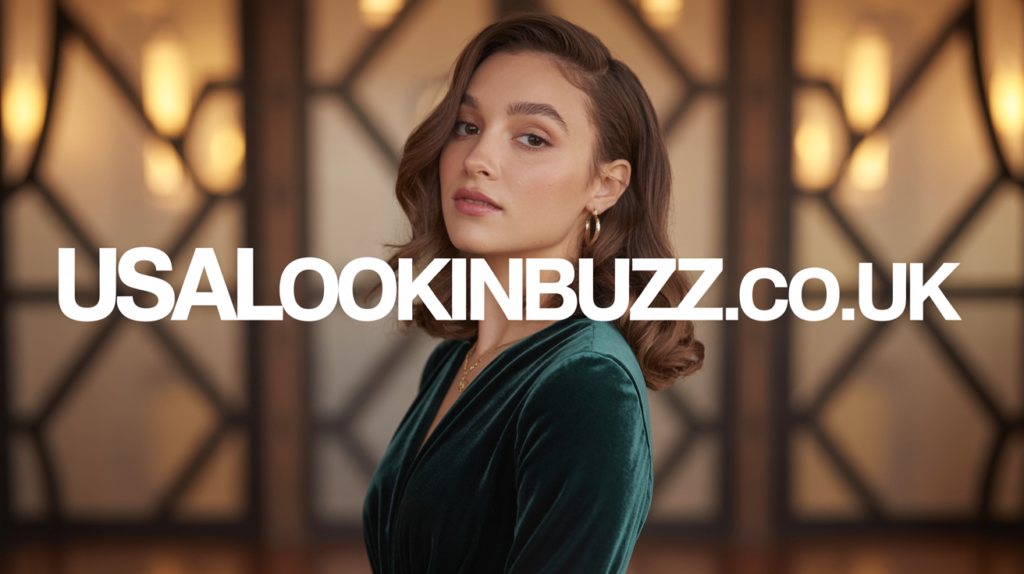
Conclusion
The olivia rodrigo stanley connection represents more than just a celebrity with a water bottle. It’s a case study in modern marketing, celebrity influence, and how trends spread in our interconnected digital world. What started as Olivia simply staying hydrated became a cultural moment that boosted a brand and influenced countless purchasing decisions.
This phenomenon reveals important truths about consumer behavior. We trust authentic celebrity usage over paid advertisements. We want to feel connected to people we admire. And social media amplifies these desires into viral movements that impact real business outcomes.
Whether you own a Stanley cup or not, the story offers fascinating insights. Celebrity culture, environmental consciousness, social media dynamics, and consumer psychology all intersect in this one trend. It shows how something as simple as a reusable tumbler can become a statement piece and status symbol.
What’s your take on the Stanley cup craze? Do you own one, and if so, what color? Has celebrity influence ever impacted your purchasing decisions? Think about these questions as you navigate your own consumer journey in this celebrity obsessed, social media driven world.
Frequently Asked Questions
Does Olivia Rodrigo actually use a Stanley cup?
Yes, Olivia Rodrigo has been photographed multiple times carrying a Stanley tumbler. These weren’t staged promotional photos but candid paparazzi shots and her own social media posts. She appears to genuinely use the product in her daily life, which made the trend feel authentic to fans.
What color Stanley cup does Olivia Rodrigo have?
Olivia has been spotted with different Stanley cup colors at various times. Fans have documented her using shades like Cream and Rose Quartz. The exact colors sometimes spark debate among fans who analyze photos trying to identify the precise shade she’s carrying.
Did Stanley pay Olivia Rodrigo for endorsement?
No evidence suggests Stanley paid Olivia Rodrigo for product endorsement. The olivia rodrigo stanley connection appears completely organic. She simply used a product that was already trending, and fans noticed. This organic nature made the endorsement more powerful than paid advertising.
Why are Stanley cups so expensive?
Stanley cups typically cost around $45 for the popular 40 ounce Quencher model. The price reflects quality construction, superior insulation technology, and lifetime warranty. The brand has also positioned itself as premium, allowing higher pricing. Celebrity associations and trend status also support premium pricing.
Are Stanley cups worth the hype?
Whether Stanley cups are worth it depends on your needs and values. They do keep drinks cold for extended periods and are durably constructed. However, many less expensive alternatives offer similar functionality. The “worth” calculation includes not just practical features but also the social and aesthetic value you place on the brand.
How long do Stanley cups keep drinks cold?
Stanley claims their tumblers keep drinks cold for up to 11 hours and iced for up to 2 days. Real world performance varies based on factors like starting temperature, ambient conditions, and how often you open the lid. Most users report excellent insulation that meets or exceeds expectations.
Where can I buy a Stanley cup?
Stanley cups are available through multiple channels. The Stanley website sells their full range. Major retailers like Target, Amazon, Dick’s Sporting Goods, and REI stock Stanley products. Some exclusive colors are only available through specific retailers, creating collectibility and scarcity.
Why do people collect multiple Stanley cups?
People collect Stanley cups for various reasons. Limited edition colors create collectibility. Some people want different colors for different outfits or moods. Others enjoy the hunt for rare editions. The collecting behavior mirrors other collectible markets where scarcity and variety drive accumulation beyond practical need.
What makes Stanley different from other water bottles?
Stanley differentiates through several features. Their lifetime warranty backs quality claims. The handle and straw design offers convenience. The 40 ounce capacity encourages all day hydration. But honestly, the brand positioning and cultural cachet now distinguish Stanley as much as functional features.
How did Stanley cups become so popular?
Stanley cups became popular through a combination of factors. Social media, especially TikTok, amplified awareness. Limited edition colors created scarcity and collecting behavior. Influencers and celebrities like Olivia Rodrigo provided endorsements. The practical benefits and sustainability angle gave legitimate reasons to purchase beyond just following trends.
Also Read usalookingbuzz.co.uk
